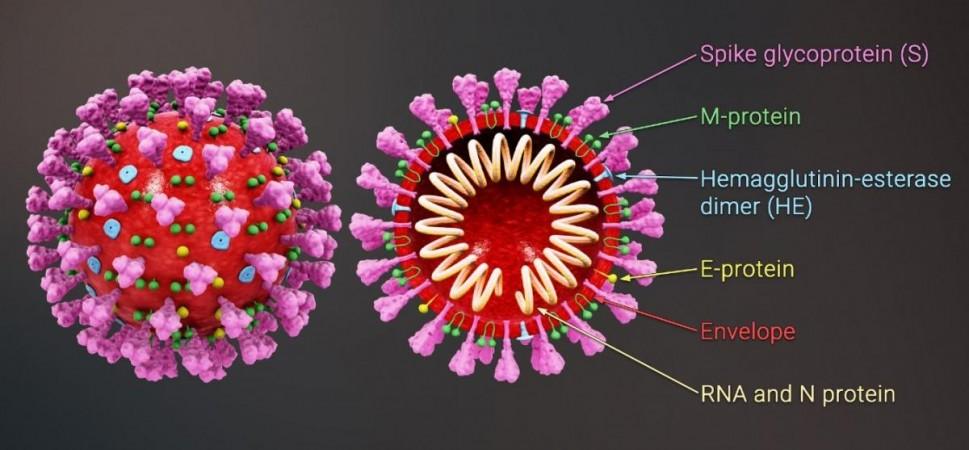Over the course of the COVID-19 pandemic, it has been established that the SARS-CoV-2 coronavirus utilizes the ACE2 receptor found on certain human cells to invade and infect them. All existing antibody-based therapeutics and vaccines aimed at countering the virus have been designed to inhibit this route of infection. However, a new study has found that the pathogen may use another pathway that does not require ACE2 receptors.
According to scientists from the Washington University School of Medicine, a single mutation provides the SARS-CoV-2 virus the capacity to enter cells without the requirement of ACE2. While the possibility of another infection route raises concerns about evading COVID-19 vaccines and antibodies, the team did not find any evidence to confirm such an evasion. The study was published in the journal Cell Reports.
"This mutation occurred at one of the spots that changes a lot as the virus circulates in the human population. Most of the time, alternative receptors and attachment factors simply enhance ACE2-dependent entry. But in this case, we have discovered an alternative way to infect a key cell type -- a human lung cell -- and that the virus acquired this ability via a mutation that we know arises in the population. This is something we definitely need to know more about," said Dr. Sebla Kutluay, co-senior author of the study, in a statement.
Infecting A Cell Without ACE2

The SARS-CoV-2 coronavirus uses its 'spike'—a protein structure found on its membrane—to gain entry into human cells. It binds with the ACE2 receptor, an enzyme found on certain cell types, in order to infect and invade cells. However, the current study arose from an unexpected finding that challenged this understanding. Last year, some of the authors of the study intended to examine the molecular changes that occur within cells that have been infected by the virus.
Though most scientists study the novel coronavirus in primate kidney cells on account of its robust growth in them, the authors believed that studying the pathogen in the lung or other cells similar to those that are infected naturally is important. In order to find more suitable cells capable of the growth of SARS-CoV-2, a panel of 10 lung and head-and-neck cell lines was screened.
"The only one that was able to be infected was the one I had included as a negative control. It was a human lung cancer cell line with no detectable ACE2. So that was a crazy surprise," remarked Dr. M. Ben Major, co-senior author of the study.
Mutation At A Spike 'Hotspot"

It was discovered that the viral sample used in the experiments—obtained from a COVID-19 patient in Washington state—had acquired a mutation. The procured virus has developed a mutation over the course of its growth in the lab. This led to the alteration of single amino acid at position 484 in the SARS-CoV-2's notorious spike protein. Position 484 is considered a hotspot for mutations on the spike.
Notably, several mutations have been observed in this particular position in several variants of the virus grown in the lab, and in humans and mice. Interestingly, some of the mutations found in the viral samples acquired from individuals were identical to the ones the authors noted in their particular variant. Two variants of concern (VOC)—the Alpha and Beta variants—also possess mutation at position 484. However, these mutations are different.
"This position is evolving over time within the human population and in the lab. Given our data and those of others, it is possible that the virus is under selective pressure to get into cells without using ACE2. In so many ways, it is scary to think of the world's population fighting a virus that is diversifying the mechanisms by which it can infect cells," emphasized Dr. Major.
In Pursuit of Mystery Receptor

With the new finding in hand, the researchers investigated whether the utilization of another pathway enabled the virus to evade COVID-19 vaccines or antibodies. They screened panels of antibodies and blood serum with antibodies from individuals who had recovered from the disease or received vaccination against the virus. Though some variations were noted, the blood sera and antibodies were able to counter the virus with the mutation effectively.
It is not evident yet whether the newly identified pathway plays a role in real-world conditions when individuals contract COVID-19. However, before the team can further explore the question raised by the finding, the alternative receptor used by the novel coronavirus to invade cells must be found.
"It is possible that the virus uses ACE2 until it runs out of cells with ACE2, and then it switches over to using this alternative pathway. This might have relevance in the body, but without knowing the receptor, we cannot say what the relevance is going to be," concluded Dr. Kutluay.













